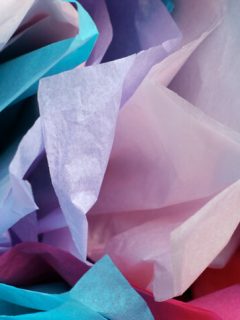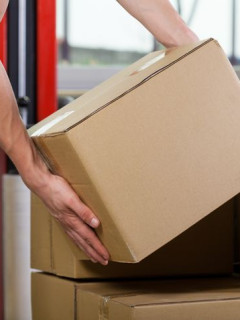Bubble wrap, commonly known as a protective material used in the packaging of fragile objects, has found its unusual but fascinating applications in the world of art and design. Although its original purpose was to protect shipments, creatives from a variety of disciplines have discovered extraordinary potential in it, transforming it into an artistic medium and a decorative element. Let’s take a look at how bubble wrap has gained recognition among artists and designers, changing the face of modern art and design.
You probably know how to pack with bubble wrap. However, this is not its only use. What else is it used for? Check it out!
Painting on bubble wrap
One of the most popular uses of bubble wrap in art is painting on its surface. Artist Bradley Hart has become known for his technique of injecting paint into individual bubbles in the foil, thereby creating pixel-like mosaics. He also creates photorealistic portraits in this way, which impress with their precision and depth of detail.
This process requires great patience and precision, as each bubble of film becomes a microscopic canvas that makes up the entire composition. His works, full of detail and vibrant colours, prove that bubble wrap can be used to create unique and surprising works of art, pushing the boundaries of traditional painting techniques.
Bubble wrap in fashion
Bubble wrap has also found its place in the fashion world. Designers have used it to create avant-garde collections in which bubble wrap acts as the main material. Its lightness, transparency and characteristic structure make clothes made from it not only original, but also eye-catching.
Such creations, although not always practical on a day-to-day basis, show how creatively one can approach the use of materials commonly regarded as unusual.
Bubble wrap in interior design
Interior designers, looking for new and unusual materials, have begun to experiment with bubble wrap. Some use it to create original furniture, such as armchairs or sofas, which not only look extremely interesting, but are also comfortable and practical. In addition, bubble wrap can be used as a decorative element in the form of wall panels or curtains, giving interiors a modern and somewhat futuristic look. Its transparency and distinctive texture can add lightness and a unique character to a space.
Designers often combine bubble wrap with other materials, such as metal or wood, to create contrasting yet harmonious arrangements. In some designs, bubble wrap is backlit, which further emphasises its structural qualities and creates interesting lighting effects. Such innovative applications make interiors not only functional, but also artistic.
Bubble wrap in education and therapy
One more, slightly more practical use of bubble wrap should not be forgotten – in education and therapy. Children love to play with bubble wrap, which makes it suitable for teaching purposes. Teachers can use the foil to create various manual tasks that develop children’s fine motor and cognitive skills.
Bubble wrap is also a valued tool in sensory therapy. Its unique texture and the sounds it makes when crushed help to stimulate the senses. It is used in therapy for children with sensory disorders, helping them to regulate stimuli and improve concentration.
Read also: Parcel fillings. What is available beyond bubble wrap?
Summary
Bubble wrap, although at first glance it may appear to be an ordinary packaging material, hides enormous artistic and design potential. Its unusual applications in art and design show how creatively everyday materials can be approached. From painting and sculpture to fashion and interiors, bubble wrap inspires and delights, transforming the ordinary into the extraordinary. It proves that true creativity knows no bounds and that even the simplest objects can become a source of artistic expression and innovative solutions.














